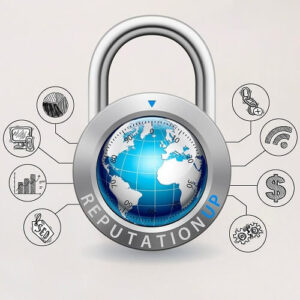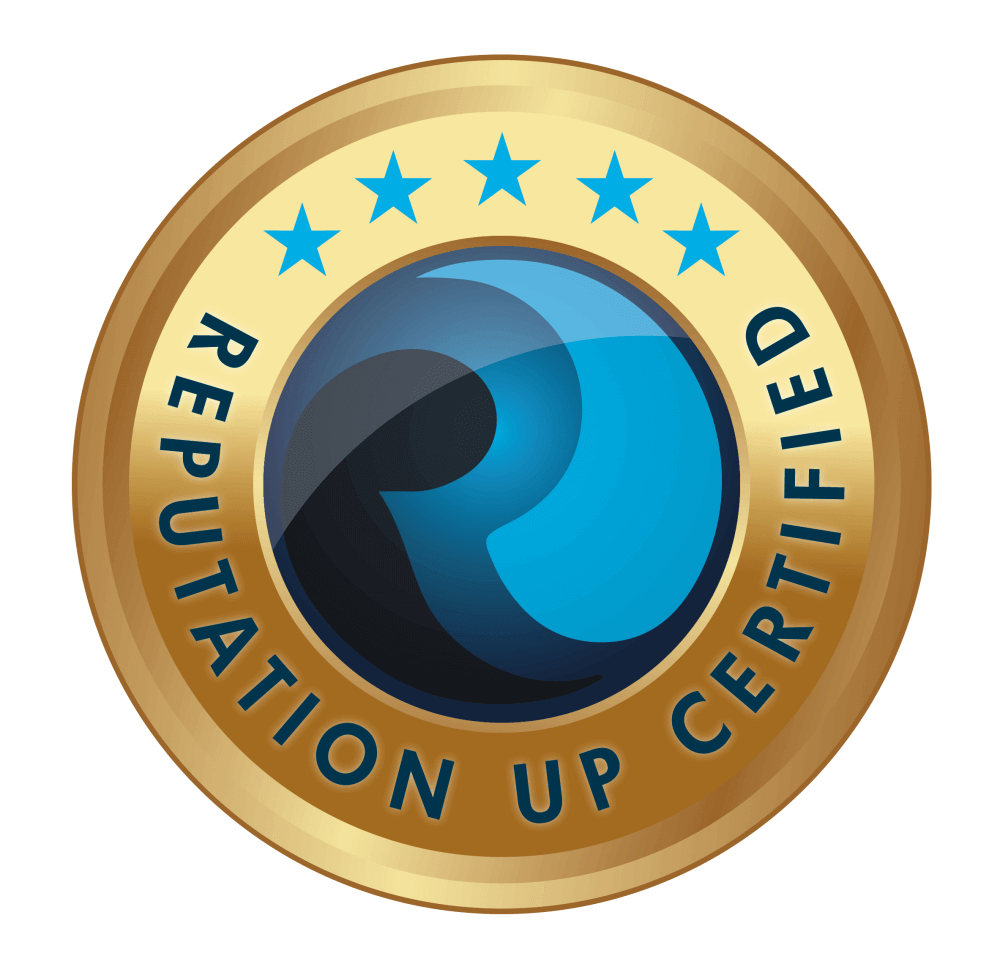Find out what brand identity is and the components that make it up. You will learn how to build it for your brand and its objective.
Index
- What is brand identity?
- Definition of brand identity
- What is brand identity design?
- How to create a brand identity?
- How to develop your brand identity?
- Brand identity elements
- What is the most critical element of a brand?
- Examples of brand identity
- How to define brand identity?
- How to measure brand identity?
- Why is brand identity essential?
- What is the objective of brand identity?
- Benefits of creating a unique brand identity
- Conclusions
- FAQ
What is brand identity?
Brand identity consists of a unique set of features a company or organization uses to connect emotionally with its target audience.
It encompasses elements like visual design, messaging, and everything linked to brand reputation and, generally, to online reputation.
Brand identity helps differentiate a company from its competitors and creates an emotional bond with customers.
It is the foundation upon which all other marketing efforts are built, and it should be consistent across every channel.
Companies can ensure their message is clear and consistent to develop customer trust by understanding brand identity.
In other words, brand identity refers to how a company or organization presents itself to its customers and stakeholders.
It combines visual elements, messaging, and values that make up the public face of a company.
Since brand reputation is crucial to brand building, you must monitor every brand element.
According to the Salsify study, users look at a brand’s reputation before making a purchase:
- 54% consider product quality ;
- 42% evaluate customer service;
- 36% examine consumers’ opinions.
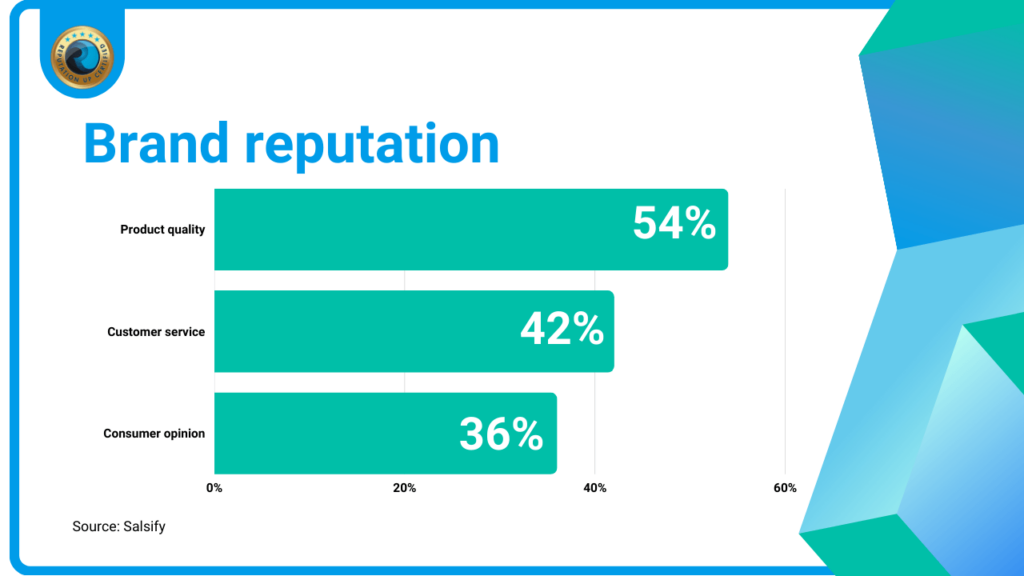
A strong brand identity distinguishes a company from its competitors and fosters an emotional connection with its target audience.
Definition of brand identity
According to the Cambridge Dictionary, brand identity means:
‘A set of qualities that people connect with a particular company or a product sold under a particular name, that make it different from other companies or products.’
Or a slightly different meaning is:
‘A set of ideas and features that a company wants people to connect in their minds with its products or brand.’
These two definitions are reflected in the prism developed by Jean-Noel Kapferer that explains brand identity’s elements:
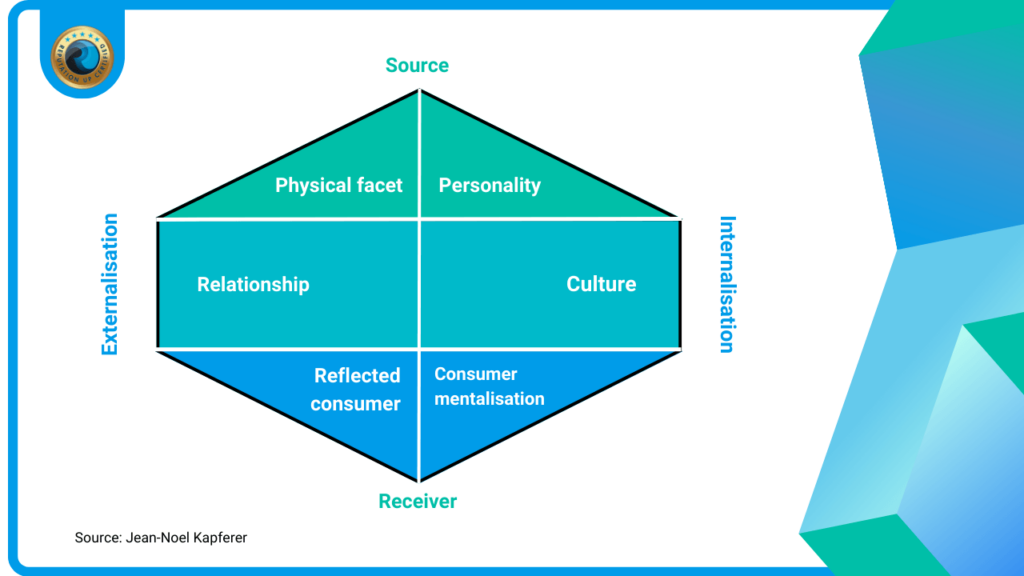
- Physique: includes the brand’s and its products’ physical characteristics and qualities;
- Personality: this aspect grows thanks to the communication created by the brand;
- Culture: it refers to the values that set a foundation for the brand;
- Relationship: it indicates the relationship between the brand and customers and how the brand wants to be perceived;
- Reflection: the brand reflects its customers, which is why the target audience is essential to develop the brand identity;
- Self-image: it is the consumers’ aspirations through the brand.
The image shows that brand identity is built according to two variables that imply an internal and external perception in the reputation monitoring spectrum.
That leads to the distinction between brand identity and brand image.
Brand identity Vs. brand image
Are two concepts commonly confused: Brand identity and brand image.
Brand identity is how the company wants to be perceived by consumers.
So, this includes all those aspects the brand creates and ‘manipulates’ to provide a specific image to the end user.
That includes elements like its logo, color scheme, catchphrase, etc.
The brand image is what people think about when they hear or see a brand.
It is based on their experience with the company and its products or services.
As a result, the brand image can represent a risk factor for a reputational crisis management plan.
In short, brand identity is what you create,while brand image is what your customers perceive.
Brand image is how customers view the company based on their experiences.
It includes customer service, product quality, and brand satisfaction.
Combining both elements helps create an effective marketing campaign to build customer and brand trust.
What is brand identity culture?
Brand identity culture is the unique set of values, beliefs, and behaviors that define the company.
It is how a company expresses itself to its customers, employees, and other stakeholders.
Companies use brand identity culture to build an emotional connection with customers and differentiate themselves from competitors.
It also helps businesses send a consistent message acrossmultiple channels and build trust with their target audience.
Accenture’s study reported that 66% of users are attracted to brands with a great culture.
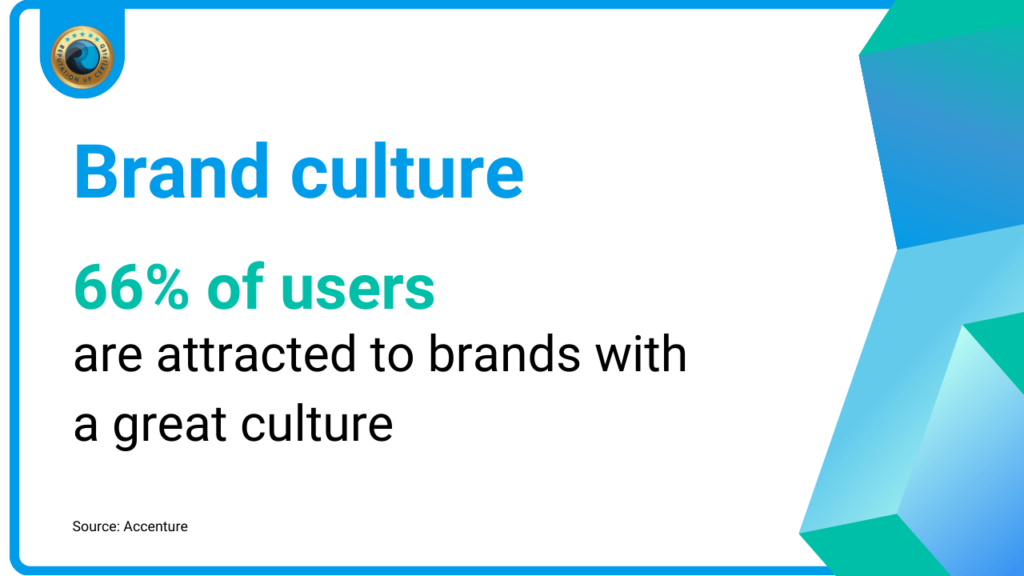
By creating a solid brand identity culture, companies can ensure their brand stands out in the marketplace and resonates with their target audience.
Identifying a company’s objective helps ensure everyone gets on the same wavelength.
Moreover, this allows you to create a cohesive culture within the company so that employees understand why they do what they do.
The distinction between brand identity and personality
Brand personality is the set of characteristics that consumers attribute to a brand, including building emotional connections with customers.
Brand personality is sometimes mistakenly associated with brand personification.
Kapferer points out in his article:
‘Inner values, physical traits, and pictures of the typical user are ‘human characteristics’ that can be associated with a brand. Hence the risk of muddling conceptually and empirically distinct brand identity facets within a single scale of so-called brand personality.’
Companies must create a compelling brand identity to stand out from competitors and be easily recognizable by their target audience.
Brand personality is about creating an emotional connection with customers and making them feel part of something bigger than just a business.
It involves creating a unique voice for the company that reflects its values and mission while authentically communicating with customers.
In this sense, brand personality is very close to corporate reputation.
Need help protecting your reputation?
Remove all negative content against your brand and publish positive content that re-launches your digital image
What is brand identity design?
Brand identity design consists of creating a visual representation of a brand that reflects its values, mission, and personality.
That is the entire process of creating visuals that represent those values.
It includes the logo design, typography, color palette, and images used to create a unified look for the brand.
Brand identity will be used throughout the company’s marketing and neuromarketing materials to create a consistent message and image for its customers.
Companies need to have a strong brand identity as it helps them stand out from the competition and build customer trust.
Businesses can ensure customers remember and recognize them in the marketplace by creating effective brand identity design.
How to create a brand identity?
Creating a solid brand identity requires careful planning and research.
First, you need to understand your target audience.
The first step is to understand who you want to address so that you can structure an effective strategy to create a brand personality in line with your target.
At this stage, you can design your brand.
Once you have identified your leverage points, you can design logos, colors, characters, images, etc., which will help you bring your brand to life.
Combining visual elements and typography will help develop a unique and stand-out brand identity.
The last phase of brand identity is maintaining it over time, which parallels brand protection.
Turn to online reputation management professionals who care about all aspects of your brand identity: ReputationUP hasover 25 years of experience in the industry.
A strong brand identity has three key attributes:
- Visuals: including logos, color schemes, typography, and image selection (visual identity);
- Conceptual values expressed in company policies or guidelines (conceptual identity);
- Interactive activities to be performed with your product or service; they include testing on websites, social media, or physical points of sale where you can directly get in touch with your customers (interactive identity).
To create an appealing brand, visual and conceptual components should support the interactive part.
How is visual brand identity defined?
A brand’s visual identity is a set of graphic elements representing a brand.
Visual brand identity includes logos, colors, fonts, images, and other visual components uniquely conveying a company’s message.
It helps companies differentiate from their competitors and create a lasting impression on customers.
How to develop your brand identity?
To better develop your brand identity, you need to follow some basic steps:
- Conduct an in-depth analysis of your target audience.
Ask yourself: Why am I creating this brand? What’s the purpose? Who is it for? What do I want my audience to feel?
Get clear on your target audience before making further decisions. - Study competitors.
Look at your competitors’ actions and understand what distinguishes their brands.
Do they sell similar products or services or have only competitive prices?
What are some unique identifying qualities of your product or service that set it apart from others in that category?
List 10-15 most similar brands and analyze them carefully.
Knowing the target and the competition, you will know where to fit in for the most benefit. - Determine your brand core identity.
What is your brand’s core idea and soul?
At this stage, you will define everything that represents your brand personality. - Build a visual brand identity.
Think about the color, tone, and typography that express the idea above.
To do this, develop your idea but also consider the features of each color and font.
Every aspect of the brand must refer to a precise, consistent, and well-structured idea.
It would help to work on the various elements of brand identity separately and then consider them as a whole.
Another very compelling way to develop brand identity is to work, in parallel, through email marketing campaigns.
As reported by After, email marketing generates a median ROI of 124%.
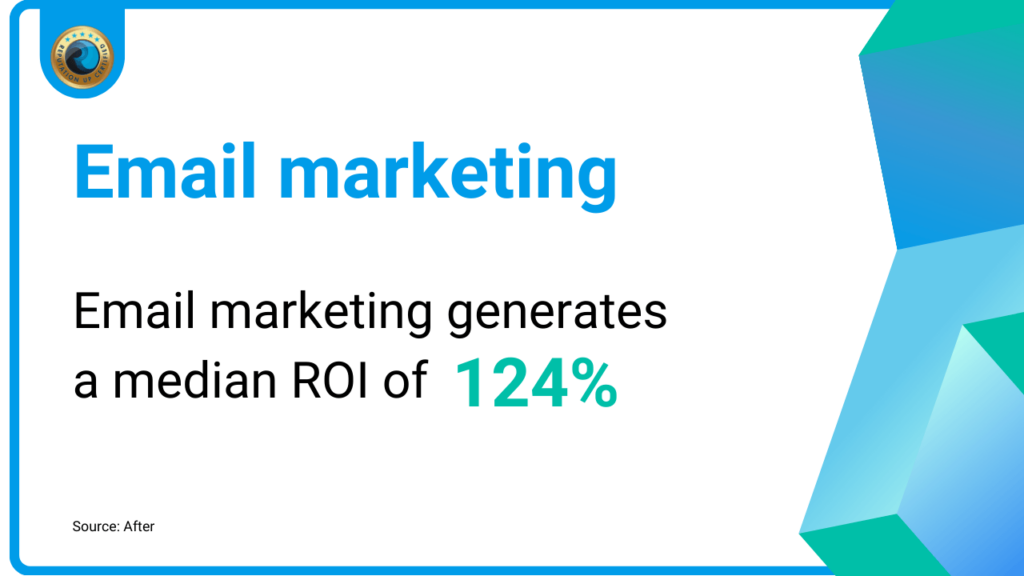
It is a beneficial tool to retain customers and, therefore, strengthen the positive image of your brand.
How to maintain brand identity?
Maintaining brand identity involves creating a consistent image, tone, and message across all your marketing channels.
Everything from website logos and design to social media posts and customer service interactions is covered.
Overall, this translates to having an excellent not personal reputation that reflects your offline reputation.
It also implies loyalty to core values, such as product or service quality, customer service standards, and ethical behavior.
Pay attention to each of these features.
For example, Khoros reports that 83% of customers cited good customer service as the primary criterion for purchasing a brand.
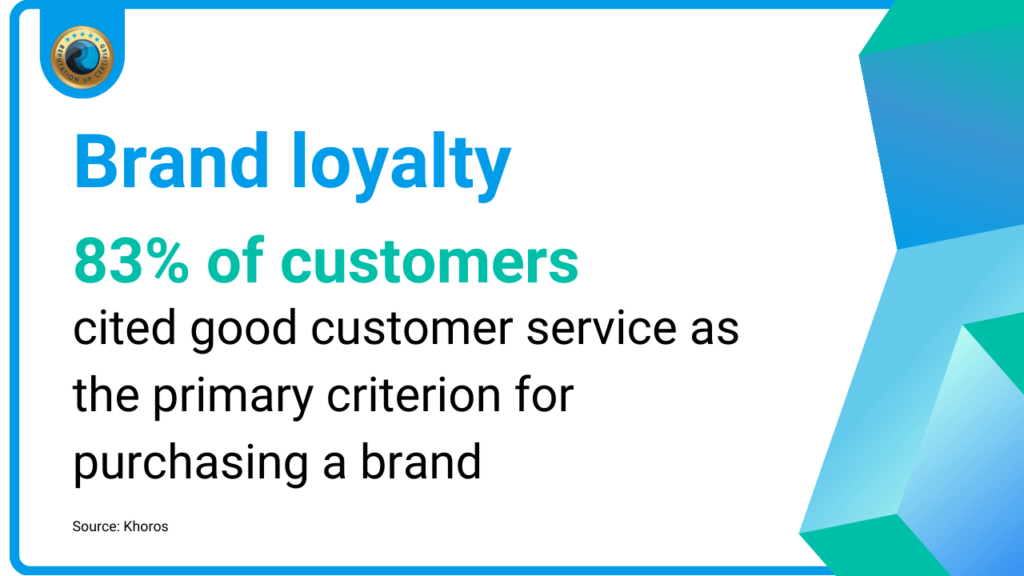
If businesses consider all these factors, theycan ensure their brand identity remains reliable and recognizable.
Brand identity elements
Companies must maintain aconsistent brand identity across all channels for customers to easily recognize them.
As a result, brand identity is made up of several distinctive elements:
- Name;
- Slogan;
- Logo & colors;
- Vision and mission;
- Packaging.
All these features are discussed below.
Name
The name is an essential component of brand identity.
It Is the first element that consumers connect to a brand, and it might influence people’s perception of the business.
It is literally about how users will become acquainted with the brand.
The right name can elicit positive emotions and establish an instant connection with the target audience.
On the contrary, an improper name can confuse and even damage the brand’s digital reputation.
Determining the right name Is crucial in developing a strong brand identity since it helps define the tone for all other brand components.
It must be memorable and meaningful to leave an impression on your target audience.
As reported by Zippia, about 72% of brands use made-up words or acronyms to create their name.
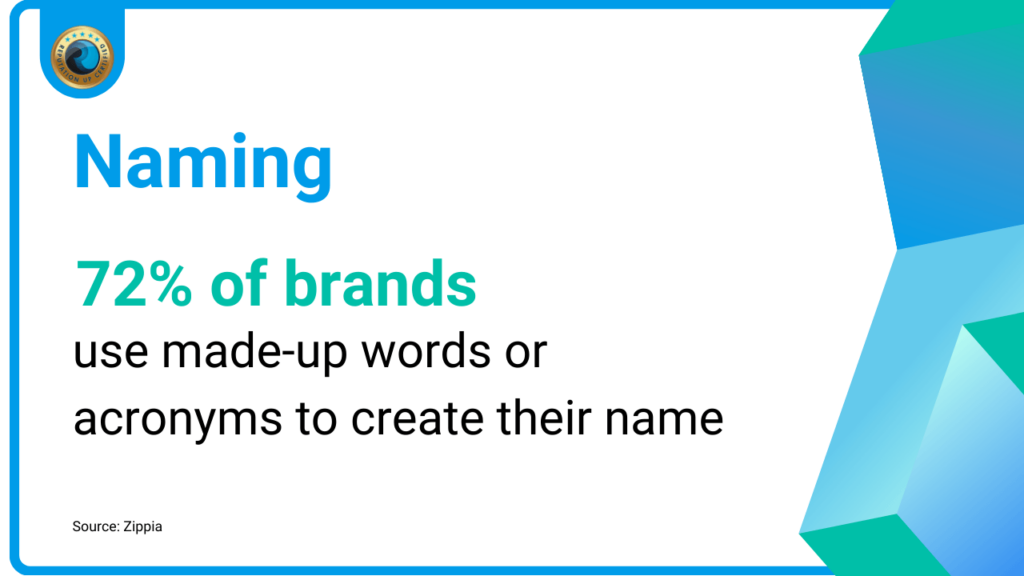
The reason is that words for which users do not already have preconceptions are more appealing.
Choosing the right name for your company or product can help you stand out and develop strong customer relationships.
Consider that the name is the first keyword associated with your digital identity when creating Google Alert to be notified when users mention it.
Slogan
A slogan is a short phrase used to summarize a company’s purpose or mission.
Businesses can display it on their website’s homepage and all other channels used in brand communication.
It is functional to convey their brand values to the public and present the benefits of using their products and services.
A brand’s slogan is an integral part of its identity.
It is the catchphrase that people remember and use to identify the company.
It must be memorable and convey the message the company wants to share.
Logo & colors
The logo is the first thing a client sees.
These are the two aspects that users tend to memorize together with the name
It can be a unique design or a stylized version of the brand name, slogan, or statement of intent.
Consider that logos and colors help visually represent the company’s values, mission, and objectives.
They are often used in marketing campaigns to boost brand visibility.
Nevertheless, the logo can also be the subject of disparaging campaigns on the web.
At that point, you may need to remove images from Google.
Do you want to remove negative images from the web?
ReputationUP guarantees the elimination of any negative image from any platform
ReputationUP relies on a team of experts who can remove harmful content that damages your image and brand.
Therefore, companies should carefully consider their logo design and color scheme to ensure they create a compelling brand identity that resonates with their target audience.
According to Foundr’s study, 95% of brands combine two colors; only 5% use 3 or more.
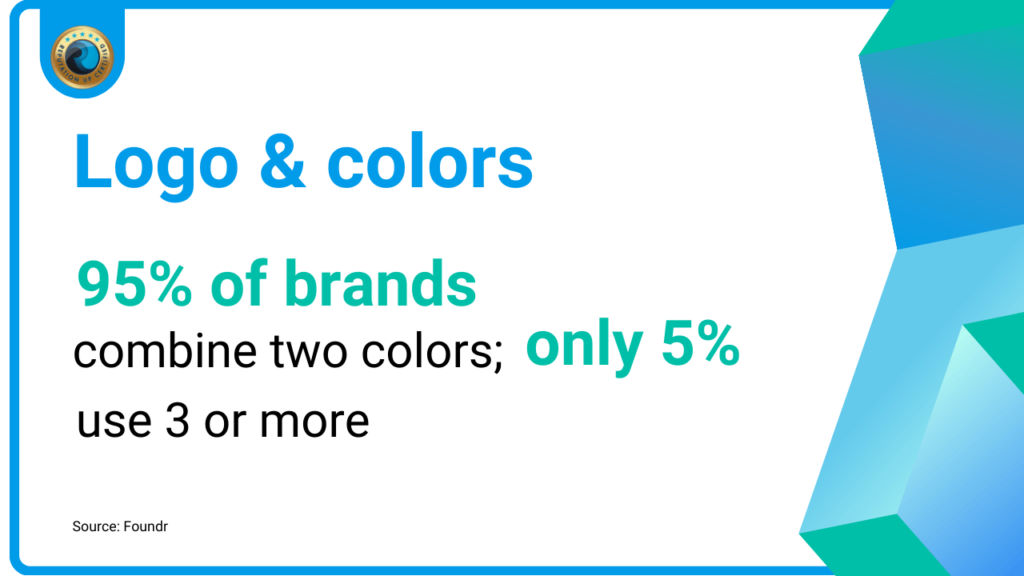
The most used colors are the following:
- Blue: 33%;
- Red: 29%;
- Black, grey, silver: 28%;
- Yellow, gold: 2%.
Logo design, colors, and fonts convey critical information for the brand.
Vision and mission
The vision and mission of a brand are an integral part of brand identity.
A strong vision and mission statement can create a powerful brand impression in the minds of current and potential customers.
This brand identity component aims to communicate the company’s values, purpose, and objectives to its target audience.
It should be consistent with the brand’s overall identity being presented to the public.
Companies can ensure their message resonates with their target audience with a clearly defined vision and mission.
Techjury reports that 89% of marketers’ primary objective is building brand awareness.
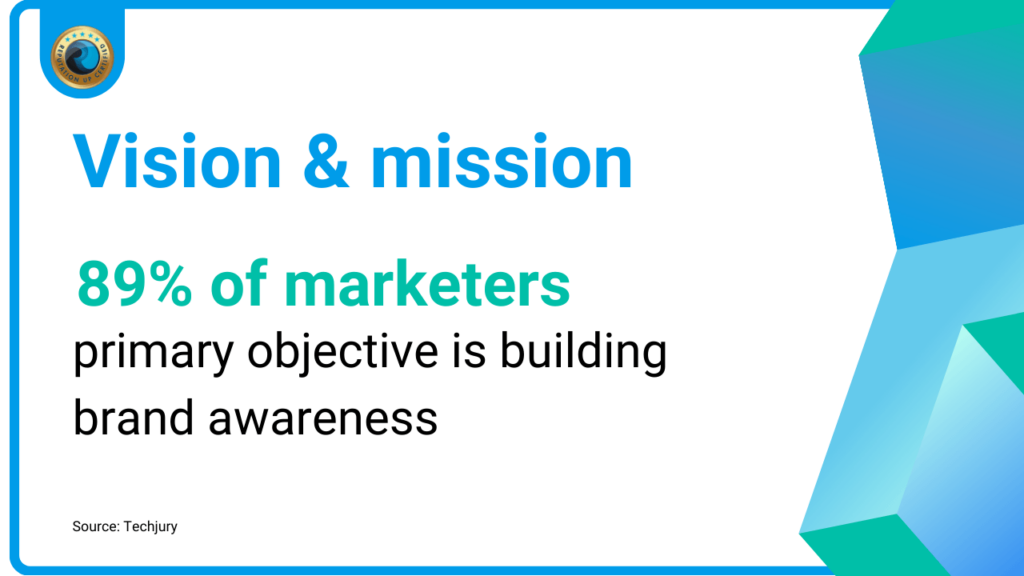
Packaging
Packaging plays a fundamental role in developing a brand identity.
Can convey the brand’s values, mission, and message to consumers.
It also helps customers to identify and recognize a product or service quickly.
Enterprise League data shows that 52% of consumers have changed product brands due to new packaging designs.

Furthermore, packaging also aims to protect the products from any damage during shipping and storage.
Therefore, companies must carefully consider packaging design to ensure that it conveys the right message and accurately reflects their brand identity, being also highly functional.
What is the most critical element of a brand?
Identity is the most critical element of any brand.
It is how a company presents itself to its customers and the general public.
A strong brand identity helps customers recognize your company and build customer loyalty.
Creating a compelling brand identity can help your business differentiate from the competition and develop a strong market presence.
Choosing a single element essential for the brand is challenging because brand identity consists of attributes that must be considered as one.
Some are image, personality, or financial reputation that attests to the brand’s reliability in the investment market.
We can understand its value and importance only by considering the brand as a whole.
Do you want to protect your financial reputation from any scandals?
ReputationUP protects your financial reputation from illegal operations and possible media scandals
Examples of brand identity
Brand identity is fundamental for companies to differentiate themselves from competitors and establish an emotional connection with their customers.
Examples of solid brand identities include Apple’s iconic logo, Nike’s ‘Just Do It’ slogan, Starbucks’ green siren symbol, and McDonald’s golden arches.
These examples demonstrate how powerful brand identities can be bycreating lasting impressions and building customer loyalty.
In today’s digital world, where competition is fierce, companies must have an effective brand identity to stand out from the crowd.
An effective brand identity effectively communicates a company’s values.
These values can be expressed through corporate intent statements, employee communications, and press releases reinforced through effective SEO and SEM campaigns.
To create a compelling brand identity, aligning your branding strategy with your business objectives is essential.
Branding is commonly used in company marketing strategies to establish their name in the consumers’ minds by developing a solid reputation.
Thus, companies can control how they are perceived, attracting customers with similar values or interests.
What is Nike’s brand identity?
Nike is one of the most recognizable brands in the world.
The company has developed a strong brand identity based on its commitment to innovation, quality, and performance.
The Nike brand identity is centered around its iconic ‘swoosh’ logo and ‘Just do it’ slogan.
The company has also created a strong visual identity using bold colors and cutting-edge product designs.
Nike’s brand identity focuses on athletes and their accomplishments while also inspiring people to do their best.
It also makes frequent references to inclusivity, diversity, and sustainability in its slogans.
What is Adidas’ brand identity?
The Adidas brand identity focuses on quality, performance, and style.
It is synonymous with innovation, creativity, and authenticity.
The brand places great value on sustainability and social responsibility.
Adidas also fosters meaningful customer relationships through its products, campaigns, and collaborations with celebrities and influencers.
How to define brand identity?
The brand identity encompasses all elements comprising a brand’s visual appearance and message.
Developing a brand identity requires the following:
- Study of customer preferences;
- Competitor analysis;
- Understanding the needs and desires of the target audience;
- In-depth examination of the company’s values and mission.
Once these elements have been identified, businesses can use them to create a unique brand identity that differentiates them from competitors.
After considering these intertwined factors, you can determine what makes up your brand identity.
In an increasingly digitalized world, an effective brand identity must be developed across all media and social platforms, including the all-new metaverse.
KeyTech reports that 71% of brands are looking to sell on social media, a trend that must be addressed.
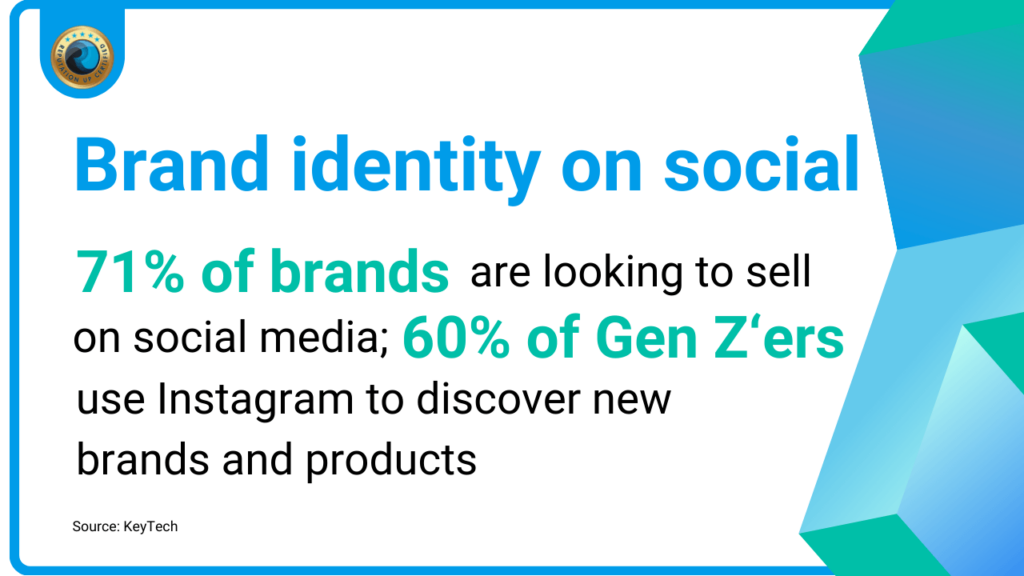
However, you can achieve the best results by considering that each channel is better suited to a specific target audience.
For example, 60% of Gen Z‘ers use Instagram to discover new brands and products.
How to measure brand identity?
Companies can measure brand identity in various ways:
- Using surveys to gauge customers’ opinion of the brand identity and how it affects the company’s perception;
- Examining metrics such as website visits, social media engagement, and sales figures to measure how well their brand identity resonates with customers;
- Using qualitative data such as customer feedback and interviews to gain insight into how customers perceive your brand identity;
- Spotting negative reviews that express opposing views about the brand;
- Analyzing customer loyalty, purchase frequency, and customer lifetime value.
Measuring brand identity generally entails determining how well a company’s message resonates with its target audience and how effectively it communicates its values.
The objective remains to understand how customers perceive the company’s products or services.
By understanding how customers feel about their brands, businesses can make well-informed decisions to help them create a solid brand identity in thelong run.
Companies can also use a brand monitoring tool explicitly created to monitor the brand’s online progress to achieve this goal.
Why is brand identity essential?
Brand identity is crucial in creating a memorable brand, as it helps customers recognize and remember the company.
As a result, brand identity can assist a company in distinguishing itself from its competitors.
This makes it easier for customers to make informed decisions about what products or services they want to buy.
By developing a solid brand identity, companies can retain customers more likely to return for future purchases.
As reported by Mailchimp, these are the concrete benefits of a consistent brand identity:
- Increased trust from customers;
- Better brand recognition in a crowded marketplace;
- Increased loyalty from buyers;
- Stronger product launches;
- Consistent sales and performance;
- Increased leads and sales potential;
- Better credibility in the industry;
- And also greater control over pricing.
Recognizing a brand has an implicit advantage by positively affecting its search engine positioning.
The high surfing traffic on a website makes any SEM campaign more effective.
Why are brand guidelines essential?
Brand guidelines are essential for any company to create a strong and consistent brand identity.
They ensure that your company’s visual assets, such as logos, colors, and fonts, are used consistently across all platforms.
Using them helps create a unitary look for the company’s products or services.
And customers can recognize the brand more immediately.
Brand guidelines are also easy-to-follow, so employees use the company’s brand elements daily.
Statista‘s data shows that only 30% of U.S. companies know and use the organization’s guidelines.
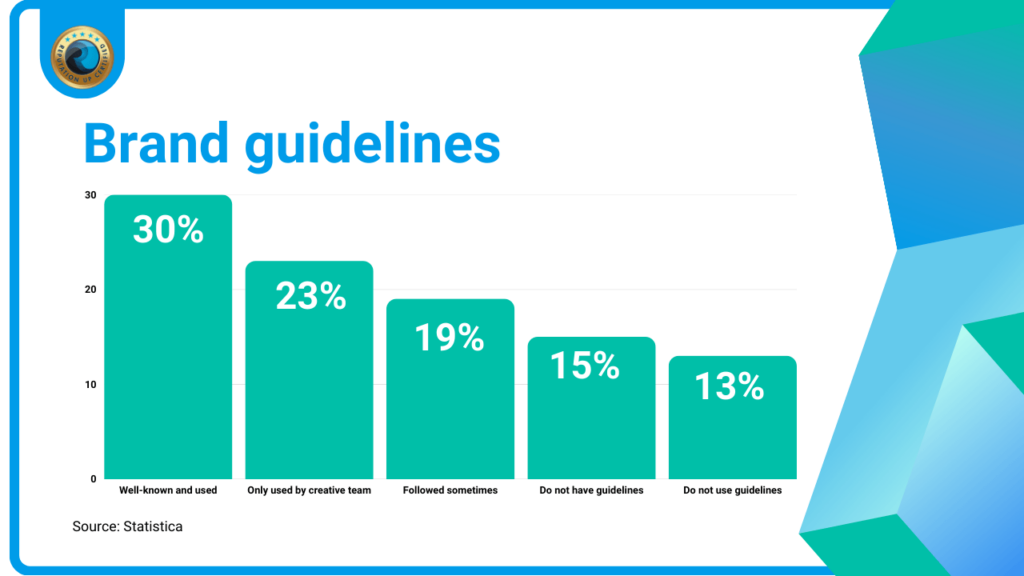
While 15% have no guidelines to follow, and 13% do not use them at all.
Why is the brand image important?
Brand image is vital as it helps a company to stand out from its competitors.
It is the company’s business card to the public and shows how it wants to be perceived.
A successful brand image can create positive associations with your company, making it more attractive to potential customers.
Furthermore, it has a vital role in creating customer loyalty, as customers are likelier to choose a brand they trust than one they do not know.
46% of consumers are willing to pay more when they recognize the brand name, according to Salsify.

What is the objective of brand identity?
A good brand identity strategy ensures customers recognize and associate the brand with specific values or emotions.
Brand identity also helps companies build customer trust by creating a consistent look across all channels.
Building a solid brand identity must go hand in hand with reputation management.
Companies can ensure their target audience remembers them with a strong brand identity.
You can use several methods to build your brand identity:
- Develop corporate mission statements;
- Logo customization for different channels and products;
- Design a unique visual image for your company;
- Develop a unique marketing strategy for your company;
- Create and implement a business website design for your company.
Brand identity is a fundamental part of marketing success.
ReputationUP takes care of the entire process of your brand management, from creating an identity to monitoring and protecting it over time.
Benefits of creating a unique brand identity
A strong brand identity can help differentiate your company in the market, attract new prospects, retain customers, and increase sales.
A unique brand identity allows your company to stand out and impact potential customers.
It also helps build trust between current and future customers, as they will recognize your company’s name and logo when they see it in advertising or online.
A well-developed brand identity also gives you access to more marketing opportunities.
It is crucial for small businesses with low budgets for large-scale advertising campaigns.
In addition, having a consistent brand identity across all platforms will help create a unified customer experience essential for long-term success.
Conclusions
In this guide, we have shown all aspects of a brand identity.
Here are the conclusions you can draw:
- Brand identity is a unique set of attributes a company or organization uses to connect emotionally with its target audience;
- In short, brand identity is what you create, while a brand image is what your customers perceive;
- 66% of users are attracted to brands with a great culture;
- 83% of customers report that good customer service is the primary criterion for purchasing a brand;
- When creating the logo, 95% of brands combine two colors; only 5% use 3 or more;
- 52% of consumers have changed brands due to new packaging designs;
- 71% of brands are looking to sell on social media;
- Loyalty is a fundamental aspect of brand identity; 46% of consumers are willing to pay more when recognizing the brand name.
Considering this data, it is easier to understand why brand identity is vital and how it affects a brand’s reputation.
ReputationUP, a leading company in online reputation management, follows you through online reputation building and management.
Do you want to grow your brand’s online reputation?
97% of entrepreneurs say online reputation management is the main key to success for their business
FAQ
The four key elements are brand identity, image, culture, and personality.
A branding strategy comprises the ‘7 Ps’: product, price, promotion, place, packaging, positioning, and people.
Branding objectives include building awareness and loyalty.
Social media have become significant channels for asserting identity. Creating a social media brand identity involves developing strong branding according to the peculiarities of each social media platform.
There are three types of brands based on their identity: company, product, and personal brand. The latter concerns individuals.


